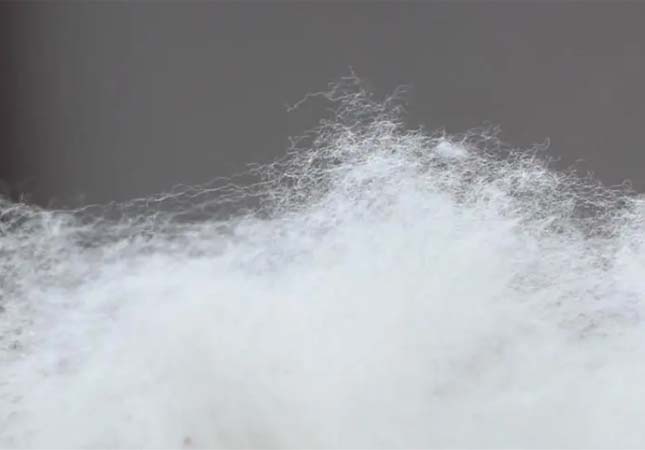Cotton is one of the most important crops in the world, with large output and low production cost, making cotton products relatively cheap. Cotton fibers can be made into a variety of fabrics through various weaving machine, its products range from light and transparent voiles to heavy canvases and thick velveteen, and are suitable for all types of clothing, upholstery, and industrial fabrics.
Cotton fabrics are wear-resistant, can be washed and ironed at high temperatures, and are comfortable to wear due to their rapid absorption and removal of moisture. The cotton fabric can be made with other functions including anti-fouling, waterproof and mildew-proof through other finishing processes treatment. Cotton Fiber The intrinsic quality indicators of cotton fiber mainly include fiber length, fiber fineness, fiber strength, and fiber maturity.
Fiber Length
Fiber length refers to the distance between 2 ends of a straightened fiber. There are various methods of measuring fiber length. The length measured by the hand-pulling ruler is called the hand-pulling length; the length measured by the carding method is called the opening length; the length measured by the cotton fiber photoelectric length meter is called the photoelectric length; the length measured by the high-capacity fiber analyzer is called the photoelectric length. Generally, the carding length > hand-pulling length, and photoelectric length > 2.5% of the fiber span length.
Fiber Length is closely related to yarn strength. Spinning with longer fibers will increase the length of the cohesion between fibers so that when the yarn is subjected to external force, the fibers are not easy to slip off so the yarn strength is higher.

Cotton Fiber Fineness
Cotton fiber fineness means the thickness of cotton fibers and directly refers to the diameter of fiber cells. Since the diameter of cotton, fibers are difficult to be measured directly and the thickness of cotton yarn is mainly expressed by the weight thickness, that is, the length per unit weight, weight fineness is often used to describe the thickness of every kilogram of cotton fiber. Currently, we usually use the airflow meter to measure the fineness of the fiber, which is to make a fast measure of the fiber-specific surface areas through the principle of airflow, and estimate the fineness of the fiber then expressed by the micronaire value. Fiber fineness is closely related to yarn strength. Cotton yarn is made up of multiple fibers so the strength of yarn depends not only on the strength of the fiber itself but also on the number of fibers per unit of yarn fineness. When spinning high-count yarns, only raw cotton with longer fibers and better fineness can be usable.
Cotton Fiber Strength
Cotton fiber strength refers to the strength of cotton fiber for resisting tensile fracture. The fiber strength is positively correlated with the quality of yarn and cloth if other indicators are basically the same. In the case of a modern spinning machine that has high rotational speed, the high fiber strength plays an important role in reducing the cases of end breakage in the spinning process and also greatly improving production efficiency.
Cotton Fiber Maturity
Cotton fiber maturity is an important indicator reflecting the degree of fiber cell wall thickening. If certain fibers have similar diameters, the thicker the fiber cell wall means the higher the maturity will be. The fineness, micronaire value, strength, and dyeing characteristics of cotton fibers are all closely related to maturity.
High-quality raw cotton fiber requires that the main physical performance indicators must be coordinated, that is, the fiber length, fiber strength, fineness and uniformity of the fiber should be reasonably matched with each other. High quality cannot be indicated only by some good individual indicators.




